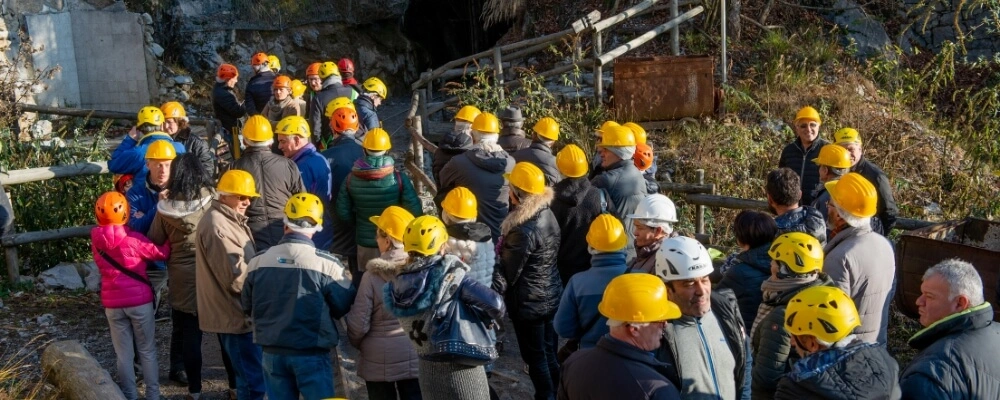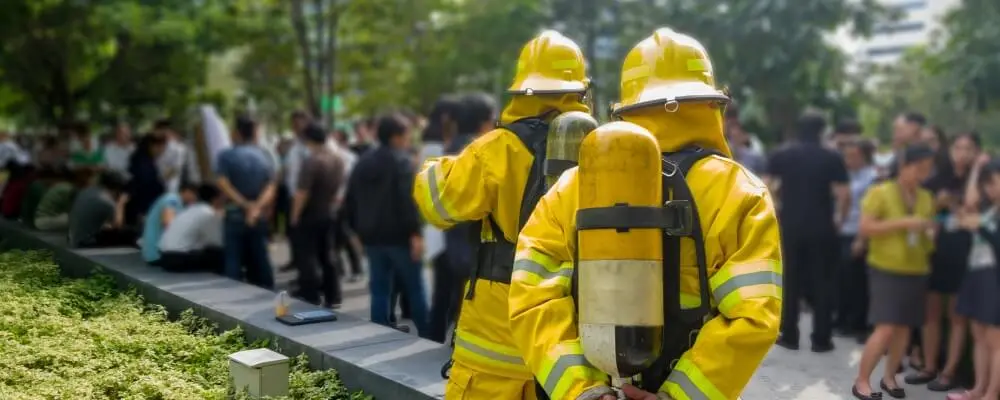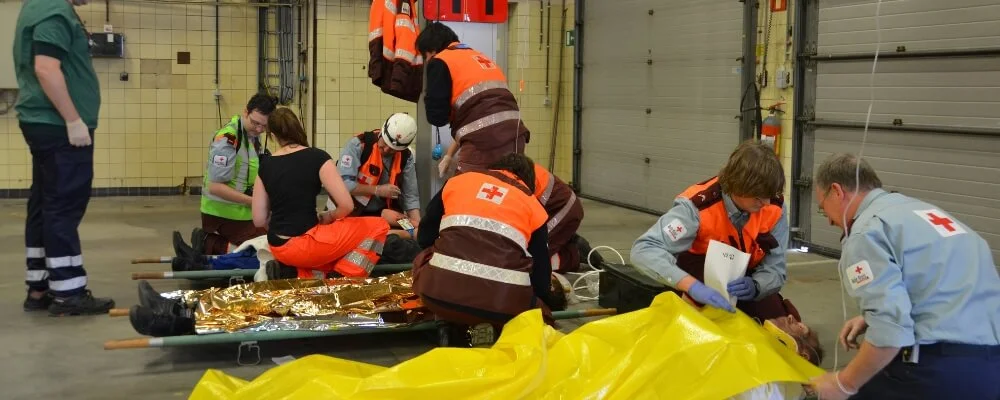Emergency situations can strike when least expected, turning routine moments into chaos and bringing forth challenges that demand swift, effective actions. While we can’t always predict when or how a crisis will occur, we can undoubtedly prepare ourselves to respond efficiently when they do. In this context, preparation is not just about having an emergency plan but actively practicing it. This might leave some wondering why is practicing emergency procedures so crucial?
This blog delves into 15 compelling reasons highlighting the paramount importance of rehearsing emergency protocols. From enhancing decision-making skills to bolstering workplace morale, each reason underscores safety, well-being, and organizational resilience. Join us as we explore the multifaceted benefits of being one step ahead of unpredictability.
What Is An Emergency Procedure?
An “emergency” is a sudden, unforeseen situation that poses an immediate risk to health, life, property, or the environment and requires urgent intervention to prevent further escalation. Emergencies can arise from various causes, including natural disasters (like earthquakes, hurricanes, and floods), human-made events (such as industrial accidents or terrorist attacks), medical situations, or other unpredictable incidents. A rapid and appropriate response is essential to mitigate such situations’ potential damage or danger.
An “emergency procedure” refers to a predefined set of actions or guidelines to be followed in a specific sequence during an emergency. These procedures are developed to address potential threats and ensure the safety and well-being of individuals, mitigate property damage, and manage the situation effectively.
Emergency procedures typically include:
- Identification of the emergency: Recognizing the type and severity of the situation.
- Notification: Alerting the relevant personnel or authorities about the emergency. This could involve sounding alarms, making announcements, or directly contacting emergency services.
- Evacuation or Shelter: Depending on the emergency, the procedure might dictate the safe and orderly evacuation from a location or taking shelter.
- Safe practices: Outlining specific actions during the emergency, such as using fire extinguishers, shutting down equipment, or administering first aid.
- Communication: Establishing communication lines and protocols to relay information about the situation, coordinate responses, and keep all stakeholders informed.
- Roles and Responsibilities: Assigning specific roles to individuals or teams, such as fire wardens, first aiders, or floor leaders, to ensure an organized response.
- Follow-up actions: Detailing steps to be taken after the immediate threat has been addressed, such as medical care, assessment of the situation, or notifying next of kin.
- Review and debrief: After the situation is under control, review the events and the effectiveness of the emergency response, and update the procedures if necessary.
Emergency procedures are usually documented, regularly reviewed, and practiced through drills and training sessions to ensure that all members of an organization or community are familiar with them and can act quickly and efficiently when a real emergency arises.

Why Is It Important To Practice Emergency Procedures?
It is crucial for every organization, including businesses, schools, government agencies, and other groups, to practice emergency procedures. These drills are necessary to ensure the safety and well-being of everyone within the establishment. Here are some reasons why it is essential to rehearse emergency protocols:
1. Enhanced Preparedness
Preparing for emergencies isn’t just about understanding the steps on paper but internalizing them so they can be executed swiftly during real-time events. By rehearsing emergency responses, employees learn the procedures and practice the physical and mental actions required.
This continuous rehearsal ingrains the steps into their muscle memory and psyche, ensuring quicker reactions during a crisis. In essence, regular practice conditions individuals to shift seamlessly into emergency mode, significantly reducing panic and hesitation that can be detrimental in critical situations.
2. Builds Confidence
Facing an emergency is daunting, especially if one is unsure how to respond. However, when individuals are familiar with the necessary steps and have practiced them repeatedly, they are more likely to confidently approach the situation.
This assurance doesn’t just stem from knowing what to do but from having performed the actions previously, even if only in a drill setting. When people are confident, they tend to act more decisively, assertively, and effectively, which can be the difference between escalating or being managed.
3. Ensures Business Continuity
Business continuity is the ability of an organization to maintain its essential functions during and after a disaster. When a business invests in identifying potential risks and devising comprehensive emergency procedures, it’s laying down a roadmap for survival and recovery.
These plans, often stretching beyond immediate responses, cover data recovery, employee safety, stakeholder communication, and more. As a result, even when faced with unexpected challenges, businesses can rebound more quickly, minimizing financial losses and reputational damage.
4. Routine Equipment Checks
Safety equipment is only as reliable as its most recent check. During drills, equipment is tested under conditions that simulate real emergencies, ensuring it works when needed. This regular testing guarantees that tools like fire alarms, sprinklers, or emergency exits function effectively and identifies potential wear and tear that could cause malfunctions in the future. Such proactive checks can differentiate between a minor incident and a major catastrophe.

5. Streamlines Communication
Clear communication is pivotal during emergencies. As employees repeatedly practice emergency procedures, they become familiar with the internal and external channels they must use to report incidents or seek help.
This consistent repetition ensures that, during a real crisis, there’s no confusion about whom to call, what to report, or how to relay information. Consequently, swifter coordination with external entities such as emergency services results in a more efficient response and resolution.
6. Enhances Decision-making Skills
Emergencies are high-pressure situations that demand swift and sound decisions. The very nature of drills – simulating emergencies and demanding quick thinking – naturally hones an individual’s decision-making capabilities.
Over time, as employees are exposed to various scenarios and challenges during drills, they become adept at assessing situations, prioritizing actions, and making crucial decisions, all while under duress. This refined skill set ensures that when faced with real-life crises, they can navigate them with a clearer mind.
7. Identifies Resource Shortages
An emergency procedure is only as effective as the resources supporting it. Through drills, organizations can gauge if they have adequate supplies, whether first aid kits, backup generators, or trained personnel, to handle emergencies.
Identifying shortages beforehand allows businesses to address these gaps, ensuring they aren’t caught unprepared during a real event.
8. Boosts Employee Morale
Confidence in personal safety and well-being at the workplace significantly influences an employee’s morale. When staff members know they are well-trained to handle emergencies and that the organization is actively preparing for contingencies, they experience a heightened sense of security. This assurance can increase job satisfaction, reduce anxiety, and an overall positive workplace environment.

9. Promotes Safety Awareness
Regularly practicing emergency procedures is a constant reminder of the importance of safety. As employees engage in these drills, they become more attuned to safety protocols, which often translates to heightened awareness in their day-to-day activities. This increased consciousness can lead to safer practices, fewer accidents, and a more secure work environment.
10. Reinforces Organizational Commitment
The frequency and seriousness with which an organization conducts its emergency drills send a clear message to its employees: their safety is a top priority. This commitment, demonstrated through action rather than mere words, fosters a deeper trust and loyalty among the staff.
It reinforces the belief that the organization truly values its people, strengthening the bond between employer and employee.
11. Reduction in Anxiety
Fear of the unknown is a primary source of anxiety. This fear can be debilitating in emergencies, causing paralysis or erratic behavior. Familiarity with emergency procedures acts as a remedy to this.
When employees have practiced and visualized the steps they need to take during a crisis, the situation becomes less of an unknown. They have a roadmap to follow, which provides a sense of control and purpose, reducing the natural anxiety that arises from chaotic and unexpected events.
12. Identifies Flaws in Procedures
No emergency plan is perfect at its inception. Often, potential issues or inefficiencies only become apparent when the plan is put into action. Regularly practicing emergency procedures allows organizations to test their strategies in a controlled environment. This hands-on approach can highlight gaps, redundancies, or inefficiencies in the plan, which might not be evident on paper but become clear during execution.
Organizations can make necessary adjustments by identifying these flaws, ensuring the most effective response when a real emergency strikes.

13. Enhances Familiarity with Equipment
Theoretical knowledge about safety equipment is vastly different from hands-on experience. Drills provide employees with practical experience, allowing them to handle and operate equipment like fire extinguishers, emergency exits, or first aid kits.
This hands-on familiarity ensures that during an actual emergency, employees won’t waste precious seconds fumbling with equipment or trying to remember how to use it. Instead, their actions become almost reflexive, leading to more efficient responses and potentially saving lives or property.
14. Promotes Safety Culture
An organization’s values and priorities become evident through its actions. By dedicating time and resources to practicing emergency procedures, the organization signals that safety is not just a written policy but a lived value. This emphasis on proactive preparation fosters a culture where safety is prioritized and respected.
Over time, this culture can influence every aspect of the organization, from day-to-day operations to employee attitudes, creating a safer and more conscientious workplace environment.
15. Improves Response Time
In emergencies, every second counts. Delays can exacerbate damages, increase risks, or even cost lives. Prepared employees, who have practiced and internalized their roles during a crisis, are more likely to respond without delay. This swiftness directly results from reducing the time needed to process the situation, decide on a course of action, and execute it.
Regular rehearsals make these steps almost second nature, allowing for a rapid, efficient response that can mitigate the severity of the crisis.
Conclusion
In an unpredictable world, the saying “better safe than sorry” resonates more profoundly than ever. Through our exploration of the 15 reasons highlighting the importance of practicing emergency procedures, one overarching truth emerges: preparation is pivotal. It’s not merely about having a plan but internalizing, refining, and mastering it.
Regularly practicing emergency procedures equips individuals and organizations with the knowledge, confidence, and skills to navigate unforeseen crises, mitigating potential damages and safeguarding lives.
Such preparation responds to immediate threats and fosters a culture of safety, awareness, and responsibility. In essence, rehearsing for emergencies is an investment in resilience, ensuring we’re not caught off guard when challenges arise but stand ready, informed, and empowered.



